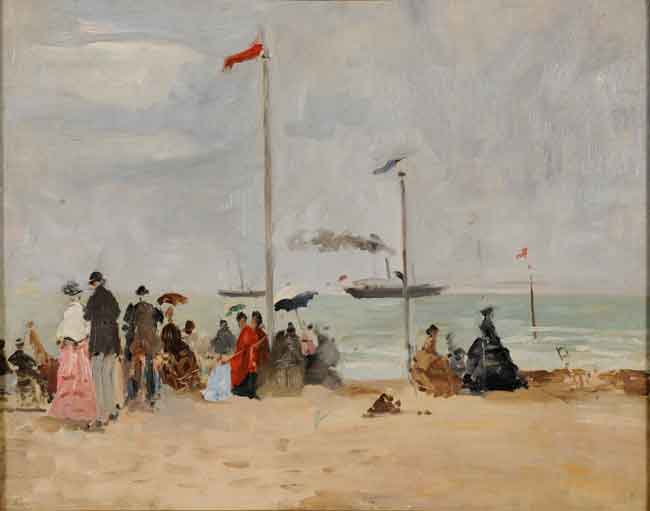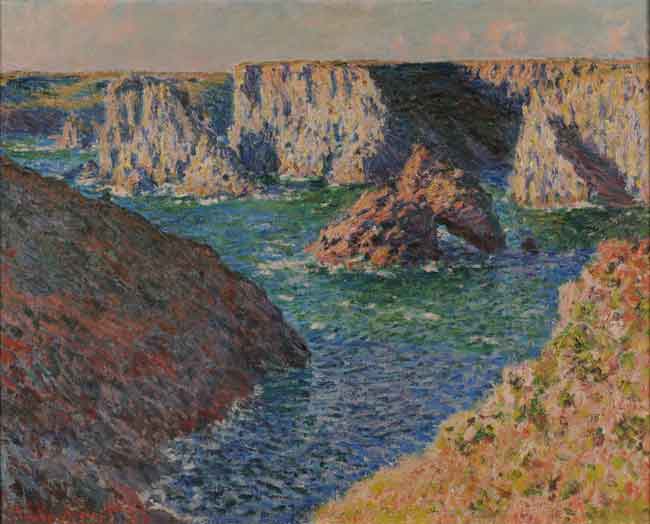Towards Impressionism
Landscape Painting from Corot to Monet
The Musée des Beaux Arts in Reims owns one of the largest collections of French 19th century landscape paintings, forty-five of which are displayed in this exhibition. Towards Impressionism, an exhibition curated and managed by Art Centre Basel in collaboration with the Musée des Beaux-Arts de Reims and the City of Reims, France, marks the first time that an exhibition drawn exclusively from the Reims Museum has traveled to the United States; the Cornell Fine Arts Museum in Winter Park, FL, is one of only two venues nationwide to host this extraordinary collection. The exhibition traces the revolutionary evolution of landscape painting in France from the romantics to the School of Barbizon, the circle of Honfleur, and up to Impressionism.
The Barbizonists, who found their major inspiration in Dutch landscape art, were active roughly from 1830 until 1870. Their name derives from the village of Barbizon, on the edge of the Fontainebleau forest, where artists like Théodore Rousseau, Camille Corot, Charles-François Daubigny, Henri-Jospeh Harpignies, Narcisse Virgilio Diaz de la Peña, Jean-François Millet and others gathered, usually at the Auberge Ganne. These artists rejected urban life and burgeoning industrialization, seeking untouched nature in its original form. They were fascinated by the mysteries of the forest and the rural tradition later described by George Sand in her ‘Pastoral Novels’. Théodore Rousseau (1812-1867) was a friend of the novelist and acted as the leader of the Barbizon School. Rousseau rebelled against official art teaching, adopting thickly applied paint in contrast to the smooth surfaces to be seen in academic paintings.
One of the most significant painters involved with the Barbizon School is Camille Corot (1796-1875). Reims is proud to possess the second largest collection of his work after the Louvre: twenty-five authenticated works, part of which are displayed in this exhibition.
The Fountain at Villa Medici (1825 -28) will remind visitors of Corot’s first trip to Italy in 1825. On his arrival in Rome he was immediately dazzled by the southern light that was to become one of the principal subjects of his work. Corot never forgot these formative years, idealizing the landscapes he had studied in the open air as he recreated them later in his studio, such as ‘Souvenir du Lac d’Albano’ (before 1862). Later works herald impressionism, reminding the visitor that Corot was interested in the ever changing flow of time and atmospheric effects, painting the same motif at different times of day.
The exhibition presented here displays 45 works in total, by several School of Barbizon painters active after 1830 and by the small artists’ circle founded by Eugène Boudin in Honfleur around 1850, to which Courbet, Isabey and Jongkind belonged. Our exhibition also displays other excellent paintings from the museum’s collection of Impressionists, including works by Monet, Renoir, and Pissarro.
The full list of artists displayed in this exhibition is as follows: Antoine Barye, Jean-Victor Bertin, Eugène Boudin, Jean-Baptiste Camille Corot, Gustave Courbet, Charles-Francois Daubigny, Narcisse Virgille Diaz de la Peña, Jules Dupré, Henri-Joseph Harpignies, Charles Jacque, Stanislas Lépine, Georges Michel, Jean-Francois Millet, Claude Monet, Camille Pissarro, Auguste-Francois Ravier, Pierre-Auguste Renoir, Théodore Rousseau, Constant Troyon and Félix Ziem.


Presenting Sponsor: PNC Financial Services Group. The exhibition is funded in part by Orange County Government through the Arts & Cultural Affairs Program. Additional support comes from the Violet and Harold Jaeke Foundation, Inc.; June Nelson; Margie Pabst Steinmetz and Chuck Steinmetz; Mr. and Mrs. Thomas Yochum; the Director’s Circle; the Rachel and Kenneth Murrah and General Exhibition Funds of the Cornell Fine Arts Museum; and the State of Florida, Department of State, Division of Cultural Affairs and the Florida Council on Arts and Culture.
